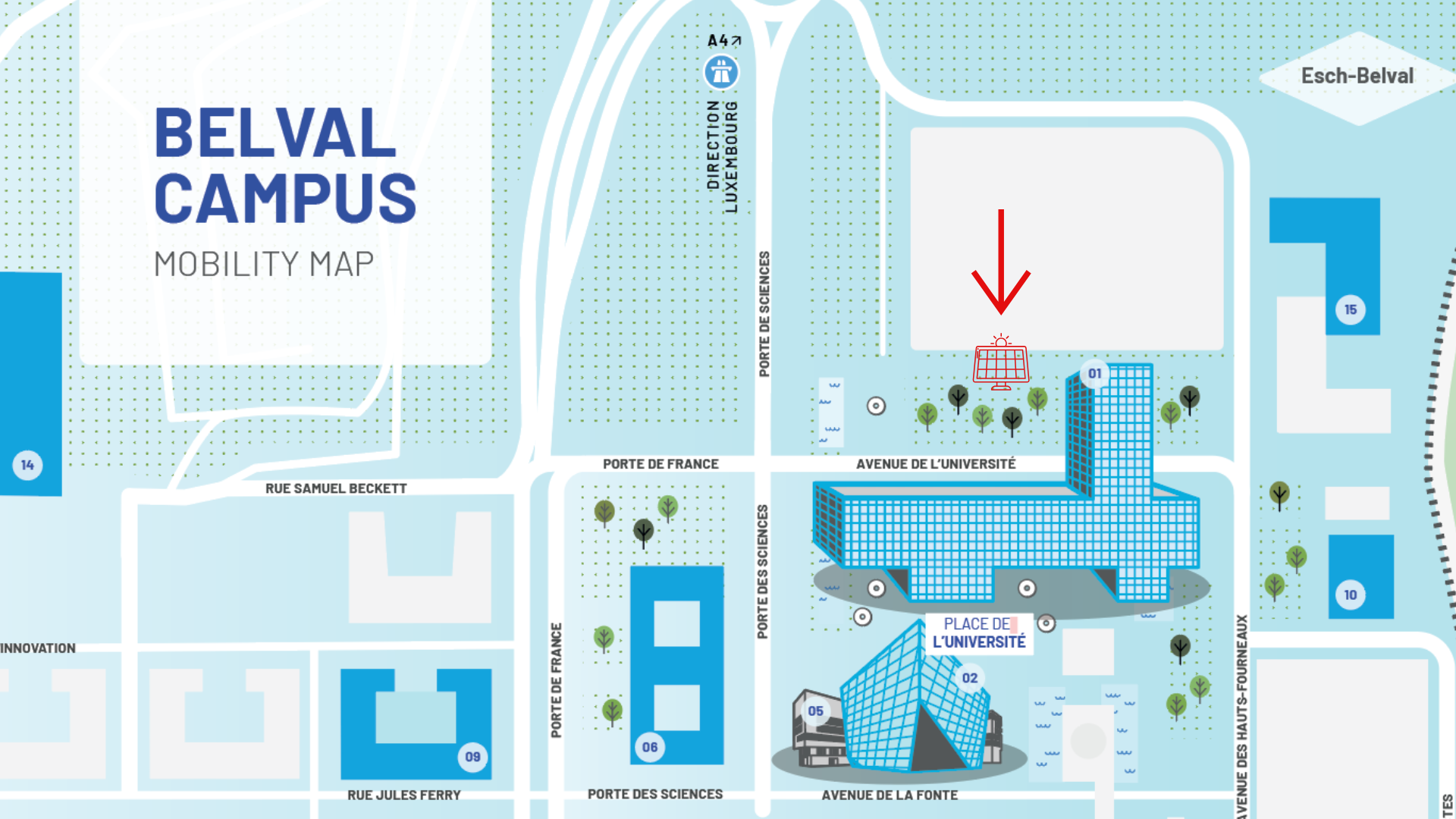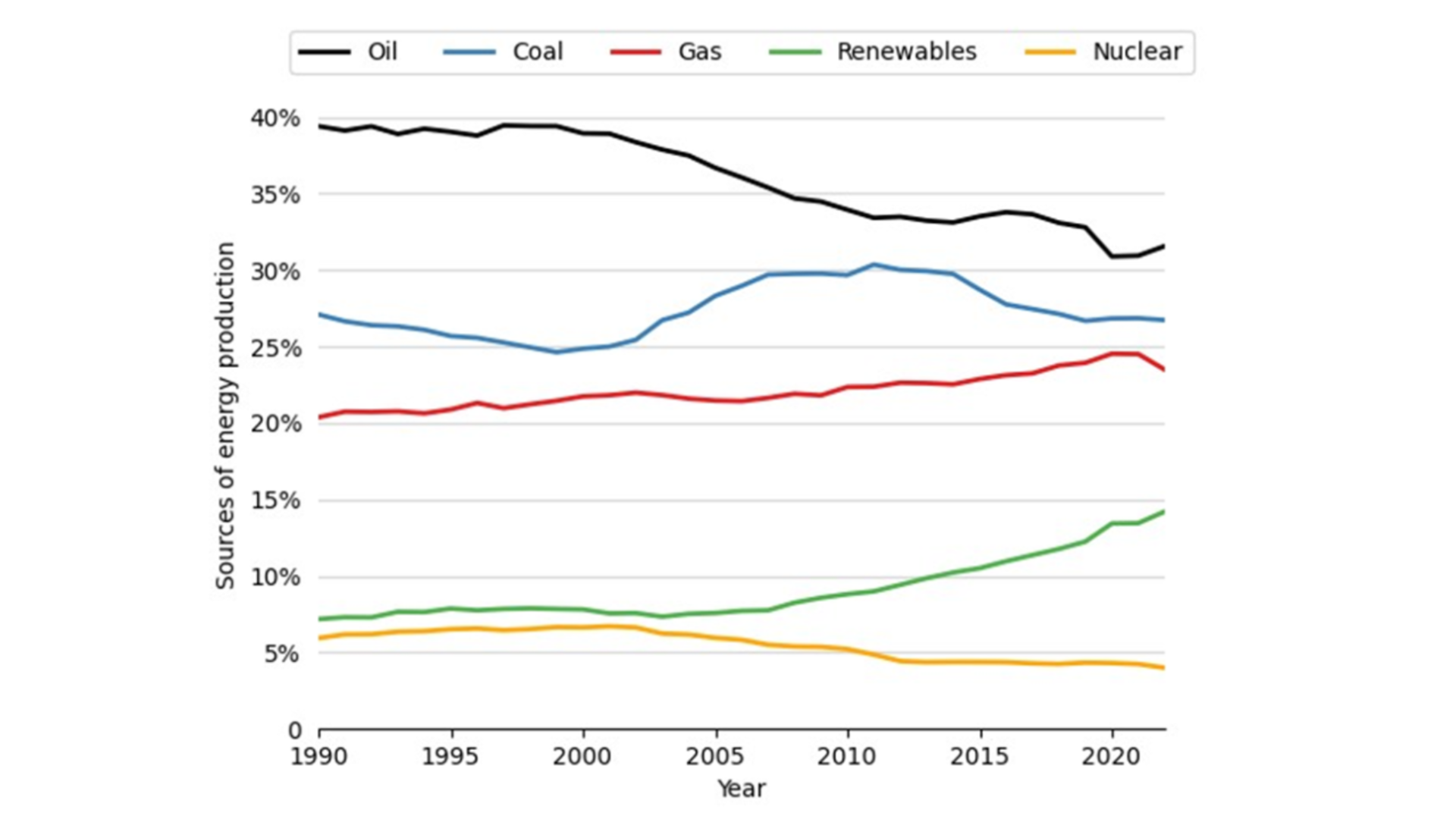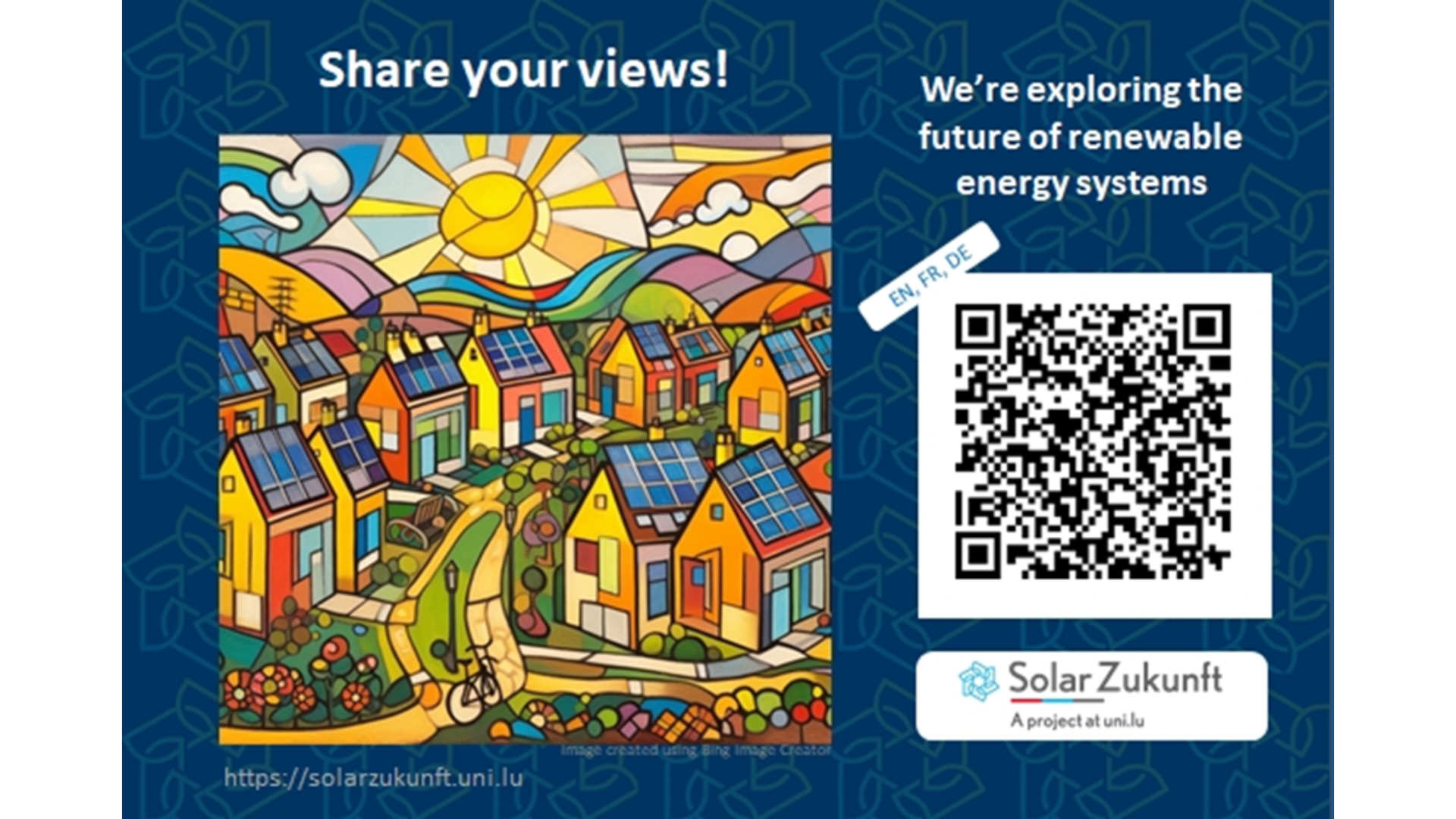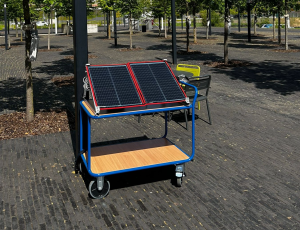Enjoy working outside with your computer!
The sunny days are back in Belval. To celebrate, the Sustainability Team will install a mobile Photovoltaic (PV) Panel on the esplanade of the Maison du Savoir in Belval during working hours when it is sunny from May to September.
If you want to enjoy the sun and work outside, nothing is easier. You need to find it and plug in your computer or your charger to enjoy solar energy. Check out our explanation of how to use it is below.

If you want to learn more about solar panels—how they work, why they are important, and the ongoing research at the University of Luxembourg on the subject—we asked Alessandro Magon and Prof. Phil Dale from the Department of Physics and Materials Science (FSTM) to provide explanations.
Please don’t hesitate to contact the team if you have questions
How to use it the Sustainability team’s Solar Panel ?
The Solar Panel and solar battery are attached on the esplanade of the MSA.
You just need to plug your device into the battery and use the energy produced, under your own supervision. Make sure the battery is on by clicking on the “On/Off” button shown here.

When using, you need to select the type of recharge you need, using the button on top of each plug, as shown here.
When you are done, just gently unplug it.

The PV Panel and solar battery are there for demonstration purposes and are the property of the University of Luxembourg.
To go further on renewable energy
What are the renewables? What types of energy qualify as renewables?
Renewable energies are those that replenish faster than we consume, meaning they don’t run out. Common sources of renewable energy are geothermal, hydro, solar and wind.
We understand that energy produced from renewable sources has seen strong growth over the last 10 years. How much of the energy produced and consumed in the world comes from renewable sources? How about Luxembourg?
Although fossil fuels still account for over 80% of the energy source worldwide, renewable energies have steadily increased globally, doubling the absolute amount of power generated from 2012 to 2022, up to over 14% of the global energy sources (see figure 1). In the same period, renewable energy consumption increased from 3% to over 10% in Luxembourg (see figure 2), which is below the EU average. Despite the continuous increase in energy consumption globally, renewables meet most of this growing demand.

Figure 1: Source: Energy Institute Statistical Review of World Energy

Figure 2: Source: Energy Institute Statistical Review of World Energy
Do you know the impact of greenhouse gas emissions associated with these different energy sources?
The construction of any power station and the material supplies to run it generates greenhouse gases, but considering the lifecycles of various energy sources, the greenhouse gas emissions associated with renewables are considerably lower than those of fossil fuels. Only nuclear power, although not renewable, has comparable emission per unit of energy to wind and solar. Natural gas and coal emit more than 8 and 15 times respectively the equivalent amount of CO2 for each unit of energy produced, compared to average photovoltaics (PV) power stations (1).
To go further on photovoltaics and solar panels
What is the principle behind photovoltaics? What amount of energy do we get from the Sun?
In just a matter of hours, the Earth receives a large amount of solar energy, which would be enough to sustain the entire global energy consumption for a year. Through photovoltaic it’s possible to harvest a portion of that light energy and convert it into electrical current to power our cities and society. In order for Luxembourg to go 100% renewable, based on its current high consumption, we would need to cover around 9% of its surface with PV modules (You can calculate your own energy consumption on https://e4l.uni.lu and compare it with people in Luxembourg and around the world!).
How does PV work in a nutshell?
Light is made of particles called photons and each photon has an energy. When they interact with solid matter, the photons may be absorbed and transfer their energy to the electrons in the material, exciting them. When a photovoltaic cell, or solar cell, is exposed to sunlight, many electrons are excited from a low energy state to a high energy state. In this high energy state they are free to move within the material. These electrons are then extracted and flow into the electricity grids to do useful work. Once the useful work is done the electrons return to the photovoltaic cell.
What are photovoltaic panels made of, and how do they work?
Photovoltaic modules comprise many interconnected small solar cells. In the simplest model, a typical solar cell is a diode which only lets electrons travel in one direction. We construct the diode from two oppositely doped semiconductor materials brought into contact to create a positive-negative junction, which creates an electric field separating the electrical charges for extraction.
Manufacturers make the most common solar cells out of silicon. It is the second most abundant material on Earth’s crust. Advantageously, silicon is chemically stable, non-toxic and has well understood properties, owing to its extensive usage in many technological applications. Currently, PV modules based on silicon solar cells achieve a conversion efficiency up to 25%, meaning that they can convert up to 25% of the incident solar power into electrical power.
How long do they last, and can they be recycled?
The longevity of new photovoltaic modules is rapidly extending and is now guaranteed for up to 40 years. Current research on recycling the panels is moving forward and shows that most components in the panels are materials already commonly recycled, such as glass and aluminum. In order to put these concerns into perspective, it’s important to compare the waste coming from PV to the fossil fuel sources: at the current rate of waste generation, by 2050 coal waste will be hundreds of times larger than PV waste (2).
What is happening at the University on Solar Energy ?
What are the main areas of research in these fields? What are the major current issues and what can we expect to see in the next few years?
The reduction of material usage and waste for the production of solar cells is one of the key topics of research in the Physics and Materials Science department at the University of Luxembourg. Research groups at the university are working on thin-film solar cells, which are tens of times thinner than silicon solar cells, being as thin as a micrometer or less (which corresponds to a thousandth of a millimeter). Fabricating thinner devices reduces the volume of material and amount of energy required during fabrication. These devices are lightweight and flexible, making them suitable for building and vehicle integration.
The Laboratory for Photovoltaics (LPV)
The Laboratory for Photovoltaics (LPV) is researching the fundamental properties of Copper-Indium-Gallium-Sulfur/Selenium (CIGS) solar cells and the exact mechanisms that limit their performance. The LPV lab is uniquely self contained, in that every part of the solar cell fabrication and all routine measurements are performed within the lab. The group is working on some of the most efficient, least toxic, thin-film devices, particularly extra thin cells (under 1 micrometer) and tandem devices. A tandem solar cell device is composed of two (or more) different solar cells. Each light absorbing material can only effectively use a certain range of light colors. And so in a tandem device, some of the light passes through one device, and absorbed in the other. This requires extra considerations when designing each of the cells.
Scanning Probe Microscopy (SPM)
Surface and interfaces of solar cells materials need to be fine-tuned to maximize the power conversion efficiency. Scanning probe microscopy (SPM) techniques are used to study semiconductor surfaces with nanometer resolution. The SPM laboratory characterizes the electrical properties and uses complementary techniques to study the composition of the near-surface region. High resolution photoluminescence imaging is used to measure the optoelectronic properties of the films. The combination of this unique set of measurement techniques allows to unravel the current bottlenecks of different photovoltaic materials.
The Laboratory for Energy Materials (LEM)
In order to integrate PV into our environment and improve the social acceptability of solar energy, the Laboratory of Energy Materials (LEM) is working on solar panels with reduced visual intrusiveness. In cooperation with the Geography department of the University, camouflaged and coloured solar panel technology that blend seamlessly into your local environment whilst maintaining similar energy efficiency is being developed (https://solarzukunft.uni.lu/).
The research towards highly efficient devices can’t neglect the environmental aspects of the technology, therefore the group also works towards establishing low waste processes for solar cell fabrication, low toxicity materials and micro solar cells.

- Source: EUROPE, UNITED NATIONS ECONOMIC COMMISSION FOR. Carbon Neutrality in the UNECE Region: Integrated Life-cycle Assessment of Electricity Sources. 2022.
- Unfounded concerns about photovoltaic module toxicity and waste are slowing decarbonization. H. Mirletz, H. Hieslmair, S. Ovaitt, T. L. Curtis & T. M. Barnes. s.l. : Nature Physics, 2023, Vol. 19.
